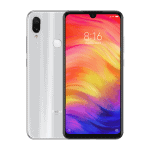
The Note 7 Pro feels like a Pro. It comes jam-packed with features too. Let’s talk about the mid-ranger.





Quick Navigation
The Note 7 Pro looks like a modern smartphone. It is thin, long, and made of glass.
It stretches 6.3 inches across. If you have smaller hands, holding it might be an issue. This is especially true as its back is very glossy. It has Gorilla Glass 5 and can handle a beating.
Around its glass panel is a plastic frame which is glossy as well.
How thin is the handset? Its dimensions are 159.2 x 75.2 x 8.1 mm.
It is super slippery. It would take us all day to count how many times it fell out of our hands.
It’s almost like the Redmi device has a death wish.
Its edges are perfectly curved. Some phones have pointed edges that aren’t comfortable to hold. Its back is curved too. This makes it look more premium.
When looking at its rear, you’ll notice a fingerprint sensor in the middle. It’s responsive. It’s also very easy to reach.
We love the phone’s blue variant – it looks rich. However, you can pick the device up in 3 more colours. They are:
We think space black looks the best from the three.
You get a microSD slot. There is also a 3.5 mm headphone jack.
As it has a large display, you get an immersive viewing experience. We would’ve loved it if a Super AMOLED panel was placed. Unfortunately, Xiaomi’s a fan of LCD screens. If you aren’t aware, IPS LCDs aren’t very vibrant.
It has an adequate screen-to-body ratio. It’s 81.4%, which means not a lot of bezel action is going on. There is also a small notch on it. If you’re not a fan, you can hide it through the phone’s settings.
We have to say, the phone is pretty sharp. Its screen resolution is an impressive 1080 x 2340 pixels.
Just like its back, there is Gorilla Glass 5 on its front.
Something we’re not a fan of is the blue tint to its display. Playing with temperature settings sorted it, thankfully.
The fact that it’s affordable is not an excuse for not having an OLED panel. The Note 7 Pro’s competitor, the Samsung M30, has a vibrant Super AMOLED screen.
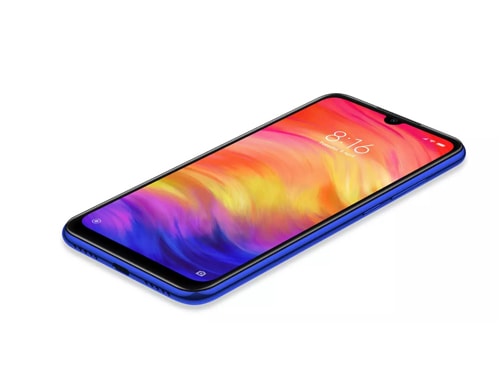
The device has a considerable 4000 mAh unit. Although it supports 18 W fast charging, you get a 10 W charger out of the box. It uses Quick Charge 4.0. With the stock charger, the device takes around an hour and a half to go from 0-100%. Its 4000 mAh battery lasts over a day.
The processor inside it is the Snapdragon 675 chip. It allows the device to handle a range of tasks. There are great memory variants– you can pick the Note 7 Pro in 64 and 128 GBs of space. Along with this, 4 and 6 GB of RAM is available. 64 and 128 gigs should be enough for you, but you can expand its storage if you want.
Something we’re not happy with is its microSD slot. It doubles as a slim slot, but this isn’t too much of an issue.
It runs Android 9 out of the box. You don’t have to worry about the Android 10 update – the handset received it. Its OS is MIUI 11. It has a bloatware problem. Not a lot of people like the way it looks either.
The Note 7 pro recently received the MiUI12 update. We hope that it receives the next version as well.
There is a dual-camera set-up on its rear. It is a 48 MP wide sensor along with a 5 MP depth one. To take 48 MP pictures, you’ll have to use Pro Mode or change your photo size to 48 MP.
The Xiaomi Note 7 Pro captures a lot of detail. We found the shots to be very sharp. It’s great with contrast too.
In auto mode, 12 MP photos are taken. Dynamic range and colour reproduction are impressive.
When it comes to low-light shots, things get iffy. Are they horrible? Not at all. If you want to take a sharp picture, you’ll have to stay very still.
Something you’ll enjoy about its camera is how much AI prowess it has. Photographs are Instagram ready the moment you take them.
What about its selfie camera? There is a 13 MP shooter in place. It’s not as impressive as the rear camera, but it captures enough detail and colour to keep us satisfied.
To help you make the best decision, we compared it with alternatives.
The M30 is larger than its Xiaomi counterpart. However, it isn’t built as well. It comes with a plastic body. The frame on it is plastic too.
It’s got some heft to it. The device is 174 grams. We talked about the handset earlier – it comes with a Super AMOLED panel. It’s very vibrant.
It not only has a more powerful screen, but it has a better screen-to-body ratio. It’s an impressive 84.2%. When it comes to screen resolution, the M30 is as sharp as its Xiaomi brother.
You’ll be using Android 8.1 out of the box. You can upgrade the mid-ranger to Android 10. Samsung’s One UI 2 is used. We think it’s more user-friendly than MIUI 11.
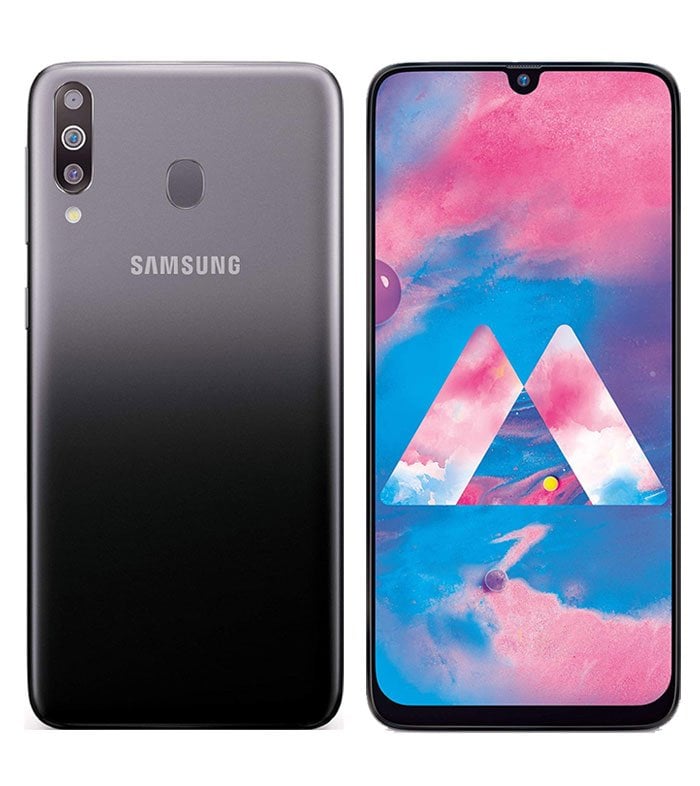
The Exynos 7904 chip is present. It’s not as powerful as the Snapdragon 675.
You’re getting impressive memory variants. You can choose from 32, 64, and 128 GB of space, along with 3, 4, and 6 GB of RAM. If you’re not happy with its storage capacities, you can expand them.
A huge battery is in the M30. It’s 5000 mAh. It lasts well into 2 days. You’ll be using 15 W fast charging. It’ll take the device around 2 hours to go from 0-100%.
There is a triple set-up on its rear. The primary sensor is a 13 MP lens, while its secondary sensor is a 5 MP ultra-wide lens. The tertiary sensor is a 5 MP depth sensor. In terms of its front camera, there’s a 16 MP shooter in place – it is a wide lens.
The A9 (2019) is heavier than the Xiaomi Note 7 Pro. It weighs 195 grams. The phone is made of plastic. However, its rear looks expensive as there is an impressive gradient on it.
The handset is big. It stretches 6.5 inches across. As it’s on the larger side, you get a more immersive viewing experience. That being said, its screen is IPS LCD – you already know how we feel about it. It doesn’t have much bezel action going on, and its screen-to-body ratio is slightly better than the Redmi’s.
If you’re looking for a sharp display, the A9 (2019) will disappoint. Its screen is only 720 x 1600 pixels.
You’ll have a hard time trying to dent its screen – Gorilla Glass 3 in place.
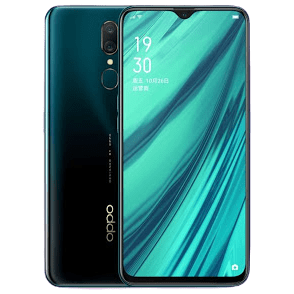
What about its insides? Well, there is a Snapdragon 665 chip. It’s snappy but not as impressive as the processor on the 7 Pro.
It has some really good memory variants. You can snag the device with 128 GB of space, along with 4 and 8 GB of RAM. 128 gigs will be enough, but you can expand it if you want.
Not only are its memory variants impressive but its battery capabilities are too. There is a 5000 mAh unit inside. It’s so large that you can reverse other phones. If you didn’t know what reverse charging is, it’s when you use your device as a power bank. To charge it, you’ll need a regular 10 W charger.
Its camera set-up has 4 sensors in place. Its primary sensor is a 48 MP wide lens, its secondary sensor is an 8 MP ultra-wide lens, its tertiary sensor is an ordinary 2 MP lens, and its fourth sensor is a 2 MP depth sensor. There is a considerable 16 MP camera on its front.
The Lite in its name is a hint – it only weighs 159 grams. Its back is glass. However, we don’t know the glass used. We don’t know the glass on its front either. If we had to guess, we’d say it’s the regular strengthened type.
The phone is not very big. It only stretches 6.15 inches across. There is an LTPS LCD screen in place. It differs from a normal LCD as it provides a sharper display. At the end of the day, it’s still an LCD, so the colours aren’t that vibrant.
Its screen resolution is slightly not as impressive as its counterpart. Its screen-to-body ratio is better, at 84.2%.
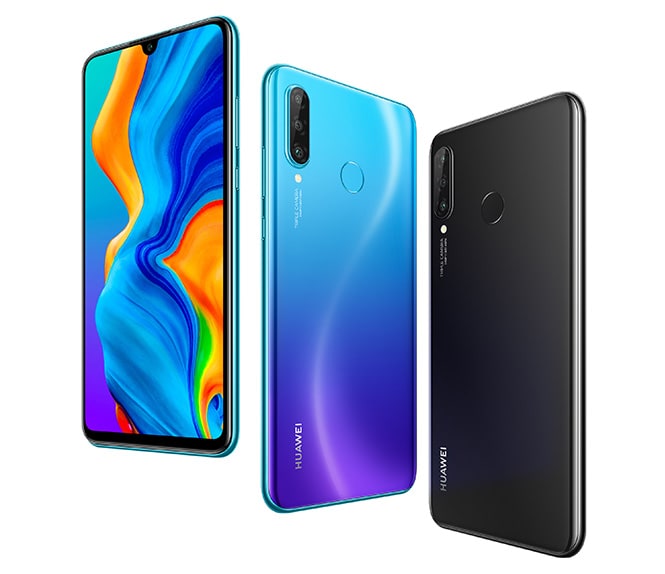
Android 9 is available out of the box. If you’re waiting for the Android 10 update, know that you can upgrade the device. The Kirin 710 is in it. It is not as good as the 7 Pro’s Snapdragon 675.
The memory variants available are impressive. You get 128 gigs of space and 4, 6, and 8 GB of RAM. The device comes with expandable storage.
Unfortunately, its battery isn’t very big. It’s 3340 mAh and lasts about a day. You’ll be able to charge it with 18 W fast charging. The P30 Lite will take around an hour and a half to go from 0-100%.
Depending on the variant you get, there are 2 camera set-ups available. Each of them has triple sensors, but the tech in them differs. One variant has a 48 MP wide primary sensor, an 8 MP ultra-wide secondary sensor, and a tertiary 2 MP depth sensor. The other one comes with a 24 MP primary wide sensor, an 8 MP secondary ultra-wide sensor and a 2 MP tertiary depth sensor.
In terms of its front camera, it differs per variant too. One of them has a 24 MP wide shooter while the other has a 32 MP wide lens.
We’re huge fans of the Redmi Note 7 Pro. The device is a mid-ranger that comes with features that will keep you content. We’re especially fond of its build. When compared to competitors, you’ll see that they deliver too – the Samsung M30 outdoes the Xiaomi device. We think it’s worth checking out.
We think Xiaomi’s a brand more Sri Lankans need to get into. If you want to check out some great phones from them, give our Facebook page a look!